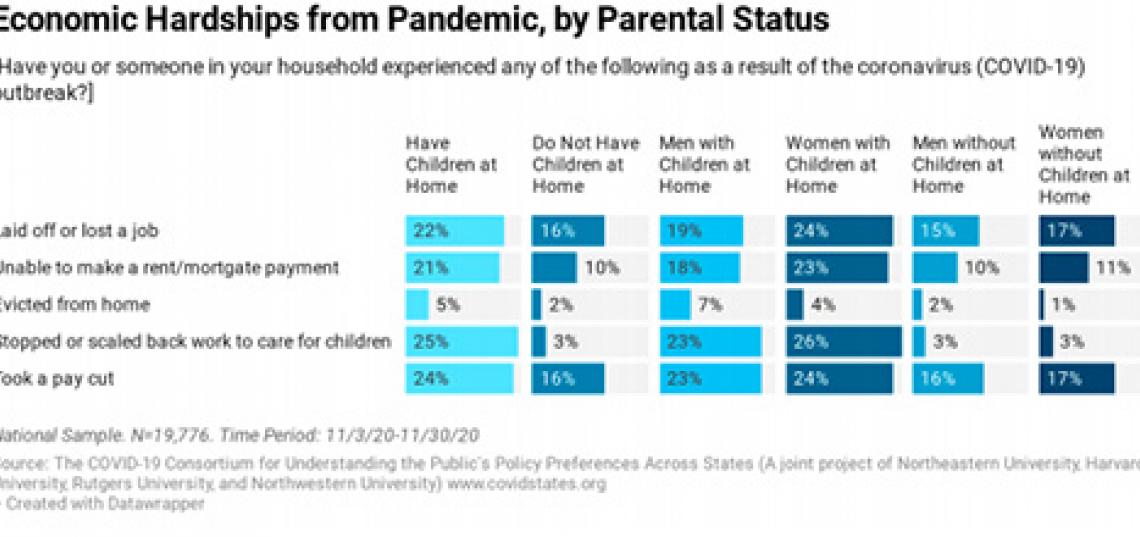
By Megan Schumann, Rutgers University Communications
SC&I Assistant Professor Katherine Ognyanova has published new survey data from The COVID States Project, which explores the economic hardships confronting Americans.
Ognyanova and her colleagues at Northeastern, Harvard, and Northwestern Universities surveyed 24,019 people across all 50 states and the District of Columbia to better understand the economic circumstances of Americans in the pandemic economy. The researchers asked about five economic hardships from Nov. 3 to Nov. 30: being evicted, being unable to pay rent or mortgage, taking a pay cut or having to cut back on work to take care of a child. Among the findings:
Nationally:
- Parents with children at home are more likely than those without children at home to have experienced all five economic hardships surveyed.
- Women with children are more likely than men with children to have suffered from job loss, inability to pay rent or mortgage, have stopped work to care for a child and taken a pay cut. Men were more likely than women to have been evicted.
- Economic hardships are fairly evenly distributed across partisan groups and regions of the country.
- People who reported having had COVID-19 are more likely than those who didn’t have COVID-19 to have endured all five economic hardships.
- Hispanics are more likely than other racial/ethnic groups to have experienced all five economic hardships.
- Across the 50 states in the percentages of residents having experienced economic hardships, there were wide fairly wide variations and no consistent geographic patterns. COVID-related hardships appear to be generally widespread across the country.
State-level data:
- 9.7% of New Jerseyans, 8.9% of New Yorkers stopped or reduced work to take care of their children.
- 4.4 of New Jerseyans, 5.6% of New Yorkers stopped or reduced work to take care of someone who had COVID-19.
- 17.9% of New Jerseyans, 17.1% of New Yorkers took a pay cut due to reduced hours or demand.
- 15.7% of New Jerseyans, 17.3% of New Yorkers were laid off or lost their job.
- 11.3% of New Jerseayns, 12% of New Yorkers were unable to make rent or mortgage payments
To view the full report and findings, click here.
Image: Courtesy of Katherine Ognyanova
